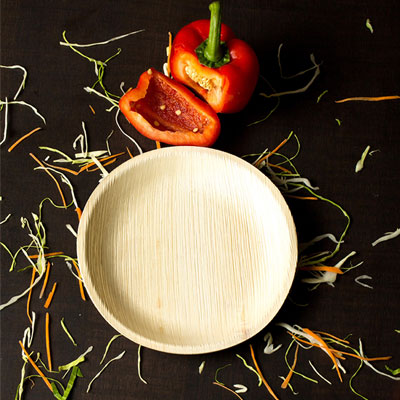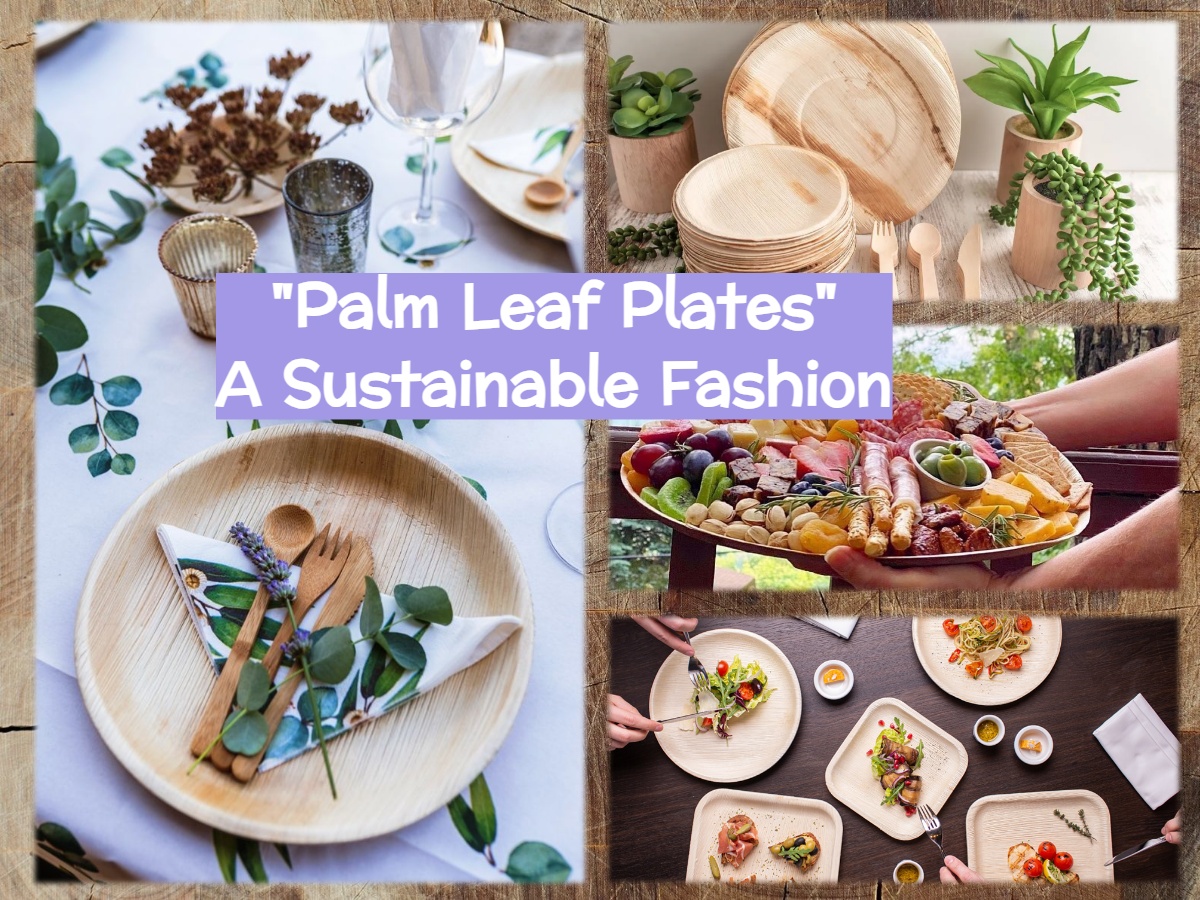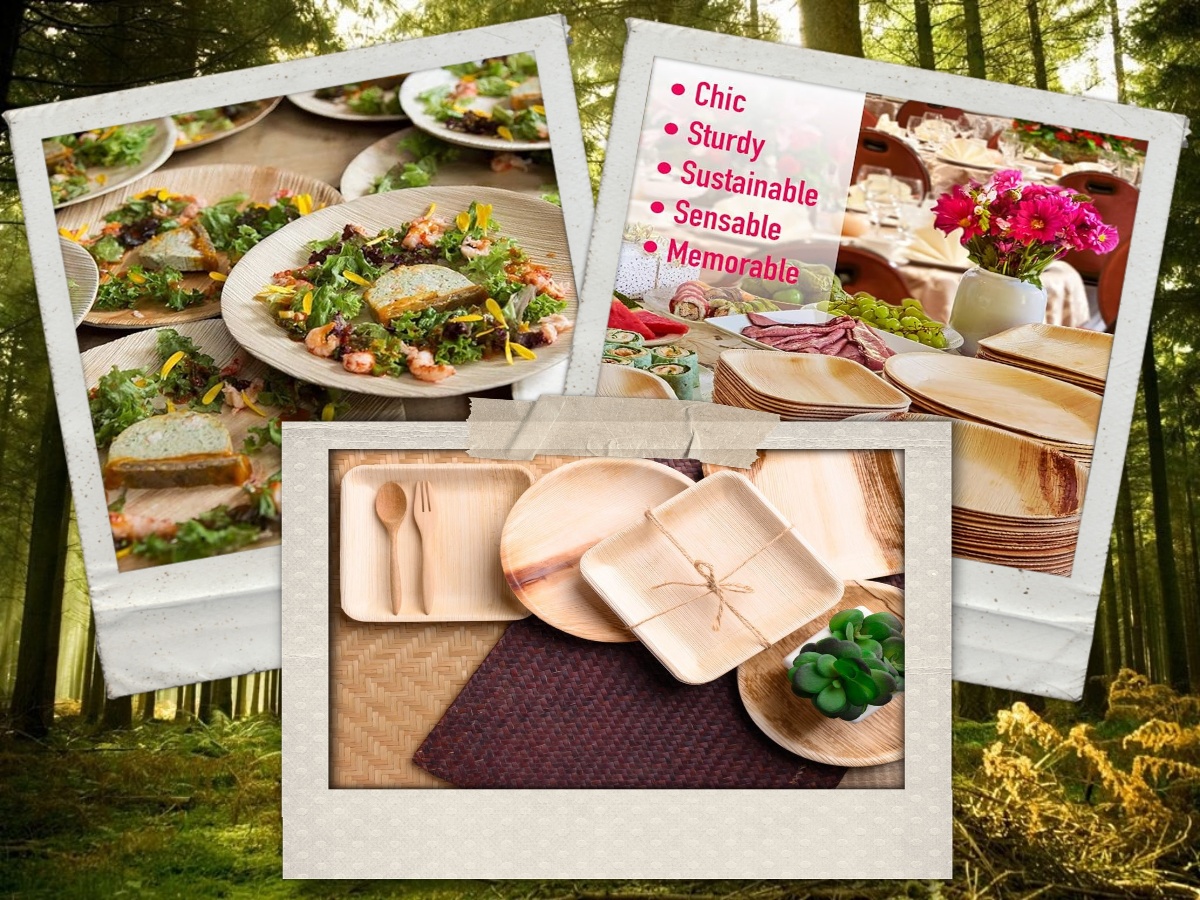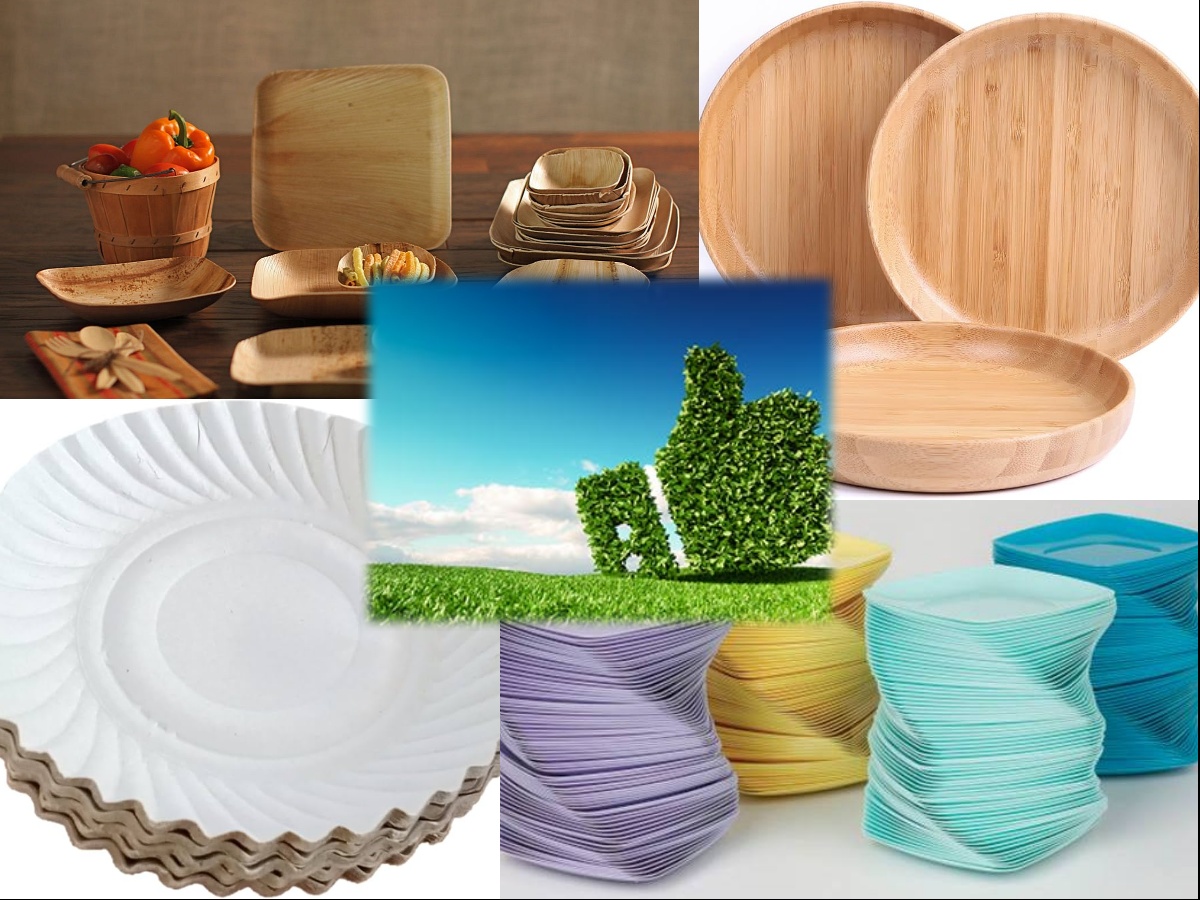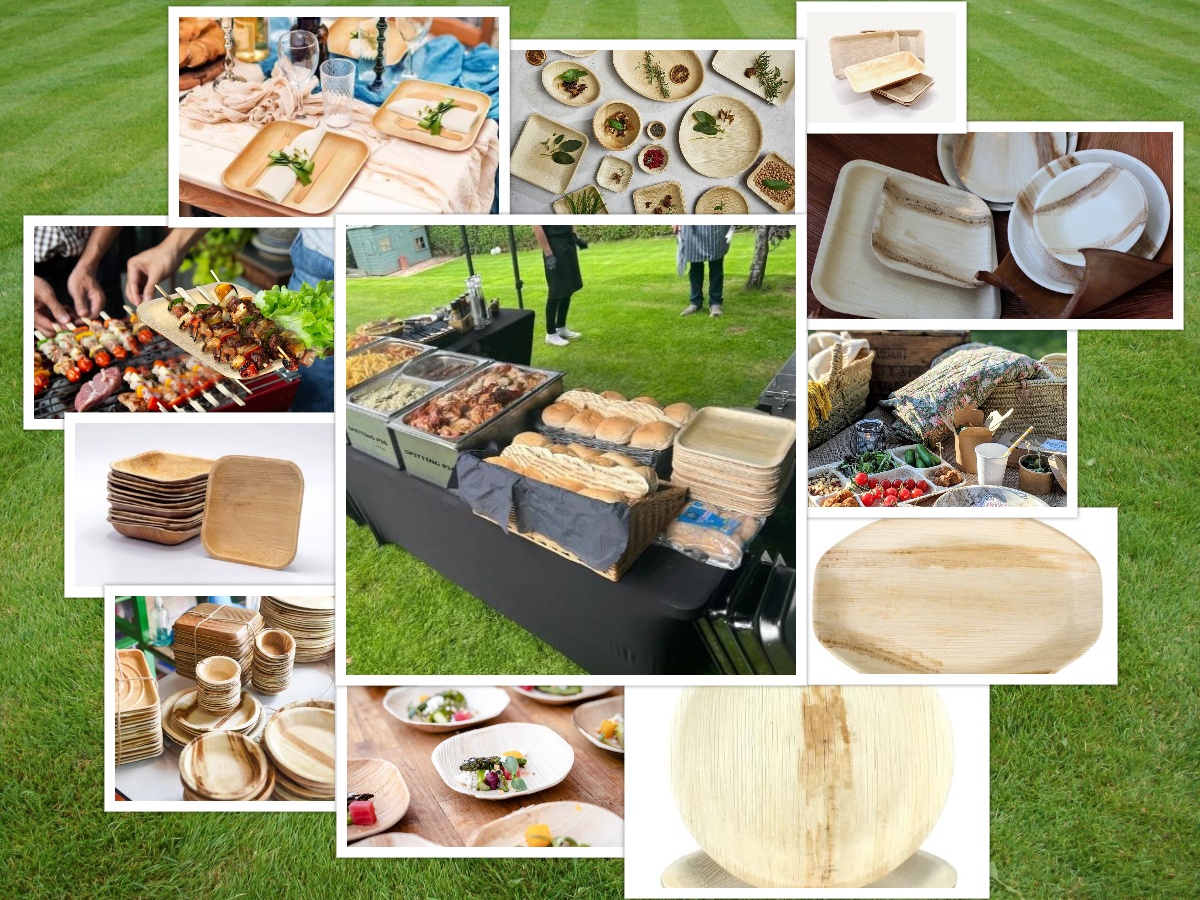“Embrace sustainable dining with Eco Elegance: Transforming Meals with Palm Leaf Plates. Our article delves into how palm leaf plates are revolutionizing meal presentations, combining environmental responsibility with aesthetic appeal. Perfect for eco-conscious individuals and events, these biodegradable plates are an essential choice for anyone looking to make a positive impact. Explore the benefits and beauty of palm leaf plates in your next gathering.”
Introduction
In today’s world, the importance of eco-friendly dining solutions cannot be overstated. Among the myriad options, palm leaf plates stand out as a perfect blend of elegance and sustainability. This article delves into the world of palm leaf plates, exploring their appeal, manufacturing process, benefits, and much more.
Table of Contents
The Appeal of Palm Leaf Plates
The appeal of palm leaf plates lies in their beautiful synthesis of aesthetic charm and environmental stewardship. These plates, crafted from the fallen leaves of the Areca palm, embody a rustic elegance that complements any dining setting, from casual garden parties to sophisticated wedding receptions. Each plate is unique, featuring natural textures and patterns that can’t be replicated in synthetic alternatives, making them a visually appealing choice for those looking to add a touch of natural beauty to their table settings.
Beyond their visual appeal, palm leaf plates are celebrated for their eco-friendly credentials. They are a testament to sustainable living, being 100% compostable and biodegradable, thus leaving no trace behind in landfills. This characteristic is particularly appealing in a world increasingly conscious of its carbon footprint and the impact of single-use products on the environment. Unlike plastic or Styrofoam options, which can take hundreds of years to decompose, palm leaf plates break down naturally, enriching the soil without contributing to pollution.
The manufacturing process of these plates further underscores their eco-friendly appeal. They are produced using fallen leaves that are collected, cleaned, and then pressed into shape without the addition of chemicals or glues. This process not only ensures the plates are safe for use but also promotes a circular economy by utilizing natural waste materials without harming the trees themselves. Additionally, the energy-efficient manufacturing process has a minimal environmental impact compared to the production of paper or plastic alternatives.
Palm leaf plates also offer practical benefits. They are surprisingly sturdy and can handle hot, cold, wet, or dry foods without getting soggy or falling apart, unlike many disposable options. This durability, coupled with their compostability, makes them a preferred choice for eco-conscious consumers and businesses alike.

How Palm Leaf Plates are Made
Sourcing of Materials
The journey of palm leaf plates begins with the collection of fallen leaves from the Areca palm tree. These trees are abundant in tropical regions of India and other parts of Asia. The process is sustainable; no trees are cut down to create the plates. Instead, only the naturally shed leaves are gathered, ensuring that the production of palm leaf plates does not harm the environment or deplete resources. This method of sourcing materials highlights the eco-conscious approach behind palm leaf plates, utilizing what nature provides without contributing to deforestation or other ecological damage.
Cleaning and Preparation
Once collected, the leaves are washed with water to remove any dirt and debris. This step is crucial to ensure the final product is clean and safe for food contact. After washing, the leaves are dried under the sun, a natural process that further minimizes the carbon footprint of these plates. The use of sunlight for drying not only conserves energy but also maintains the natural texture and color of the leaves, enhancing the aesthetic appeal of the plates.
Pressing and Shaping
The cleaned and dried leaves are then cut into the desired shapes and sizes before being pressed. The pressing process involves placing the leaves into heat-controlled molds that are shaped like plates, bowls, or trays. The heat and pressure applied during this stage sterilize the leaves, making them hygienic for food use, and mold them into sturdy, durable forms. This method does not require the use of any chemicals, glues, or synthetic materials, keeping the plates completely natural and compostable.
Trimming and Finishing
After pressing, the edges of the plates are trimmed to ensure a smooth, uniform appearance. This step also helps remove any rough or uneven areas, making the plates more comfortable to handle and use. The final product is a clean, polished palm leaf plate that retains the natural beauty and texture of the leaf it was made from. No two plates are exactly alike, with each one showcasing unique patterns and hues that are a testament to their natural origin.
Quality Checks and Packaging
Before being packaged, each plate undergoes a quality check to ensure it meets standards for strength, cleanliness, and appearance. This step guarantees that the plates are not only beautiful and eco-friendly but also practical for various dining needs. Once approved, the plates are carefully packaged, often in eco-friendly materials, and are ready to be shipped to consumers and businesses around the world.

Comparing Palm Leaf Plates to Other Eco-Friendly Alternatives
Palm Leaf Plates vs. Paper Plates
- Materials and Sustainability: Paper plates are often made from recycled paper or wood pulp, which is a renewable resource. However, the production of paper plates can still involve significant water and energy consumption, and they may be coated with plastic or wax to improve durability, complicating their recyclability and compostability. Palm leaf plates, on the other hand, are made from fallen leaves, requiring no trees to be cut down, and are completely biodegradable and compostable without any added coatings.
- Durability and Usage: Paper plates tend to absorb moisture and can become soggy with wet or oily foods, while palm leaf plates are naturally sturdy and resistant to cuts, leaks, and sogginess, making them suitable for a wider range of foods.
Palm Leaf Plates vs. Bamboo Plates
- Environmental Impact: Bamboo is a highly renewable resource due to its fast growth rate, and bamboo plates are often praised for their strength and reusability. However, the process of converting bamboo into plates typically requires more energy and chemical inputs compared to the simple, mechanical pressing of palm leaves. Palm leaf plates have the edge in terms of minimal processing and natural compostability.
- Aesthetic and Feel: Both palm leaf and bamboo plates offer a natural, rustic look that is appealing for events and eco-conscious dining. Bamboo plates have a more uniform appearance, while palm leaf plates provide a unique pattern on each plate, catering to preferences for authenticity and natural beauty.
Palm Leaf Plates vs. Traditional Ceramic Plates
- Sustainability and Eco-friendliness: Ceramic plates are durable and reusable, which makes them a sustainable option over the long term. However, the production of ceramic plates is energy-intensive, involving high-temperature kilns, and the materials are not biodegradable. Palm leaf plates offer a disposable, compostable option that doesn’t require energy-intensive manufacturing processes, making them more eco-friendly for single-use scenarios.
- Practicality for Events: While ceramic plates are ideal for home and restaurant use due to their durability and washability, palm leaf plates offer a practical, eco-friendly solution for large events, outdoor gatherings, or any occasion where the convenience of disposable plates is desired without the environmental guilt.
Considerations Across Alternatives
- Cost: Palm leaf plates can be more expensive than paper plates but are competitively priced against bamboo and are more cost-effective than purchasing a large set of ceramic plates for a single event.
- Compostability: Palm leaf plates excel in compostability, breaking down much faster than bamboo or coated paper plates and without the need for industrial composting facilities required by some bioplastics.
- Aesthetic Value: For those seeking an eco-chic aesthetic, palm leaf plates offer a unique and conversation-starting element to dining that is less easily replicated by paper or bamboo options.

Caring for and Disposing of Palm Leaf Plates
Caring for Palm Leaf Plates
- Reuse: While palm leaf plates are primarily marketed as disposable, they can sometimes be gently wiped clean and reused for dry or less messy foods, especially if they have not been subjected to very wet or oily substances. This practice should be approached with caution, prioritizing hygiene and food safety.
- Cleaning: If you choose to reuse a palm leaf plate, it should be wiped with a damp cloth without immersing it in water, as soaking could compromise the plate’s structural integrity. Use mild, eco-friendly soap if necessary, and always allow the plate to air dry completely.
- Storage: Keep unused palm leaf plates in a dry, cool place away from direct sunlight to maintain their durability and prevent any warping or moisture damage.
Disposing of Palm Leaf Plates
- Composting: The most eco-friendly way to dispose of palm leaf plates is by composting them. Being 100% natural and biodegradable, they can be broken down in a home composting system or a commercial composting facility, turning into nutrient-rich soil within a few months. Ensure your local composting facility accepts this type of waste, as capabilities and regulations can vary.
- Trash: If composting is not an option, disposing of palm leaf plates in the trash is still more environmentally friendly than plastic or non-compostable alternatives. They will eventually biodegrade in a landfill, though this process is significantly slower than in a composting environment.
Environmental Impact
Proper disposal reinforces the environmental benefits of palm leaf plates. By composting them, you contribute to a circular economy where waste is minimized, and natural resources are efficiently used. Composting not only reduces landfill waste but also produces valuable compost that can enrich soil, supporting plant growth and reducing the need for chemical fertilizers.
Benefits of Proper Care and Disposal
- Reducing Environmental Footprint: By reusing when possible and composting, you minimize waste and support sustainable practices.
- Supporting Sustainability Goals: Proper disposal aligns with broader goals of reducing landfill waste, lowering greenhouse gas emissions, and promoting soil health through composting.
- Encouraging Responsible Consumption: Adopting and promoting good care and disposal practices for palm leaf plates can inspire others to make eco-friendly choices in their daily lives.

Challenges and Considerations
Availability
Palm leaf plates are produced primarily in regions where the Areca palm tree is abundant, such as parts of Asia. For consumers in other parts of the world, this can sometimes mean limited availability or the need to order these plates online, which might include additional shipping costs or longer wait times. Efforts to expand distribution channels and increase local production in areas with high demand could help mitigate these issues.
Cost
Compared to traditional plastic or paper plates, palm leaf plates can be more expensive due to their sustainable production process and the labor-intensive methods used to create them. This cost factor can be a significant consideration for large events or businesses looking to switch to eco-friendly disposables. However, it’s important to weigh the initial cost against the long-term environmental savings and potential appeal to eco-conscious customers.
Consumer Perception
Despite growing awareness of environmental issues, some consumers may still perceive palm leaf plates as less durable or suitable only for casual, outdoor events. Overcoming this perception requires education on the strength, versatility, and elegance of palm leaf plates, as well as showcasing their use in a variety of settings, from upscale catering to everyday dining.
Practical Usage
While palm leaf plates are suitable for a wide range of foods, they may not be ideal for every type of meal, particularly those that are extremely wet or liquid-heavy over extended periods. Users should consider the nature of the food being served and the duration of the event when choosing to use palm leaf plates. Additionally, since they are disposable, there’s a need to ensure proper disposal facilities, especially for composting, are available at the venue.
Environmental Impact Consideration
It’s also important to consider the full life cycle and environmental impact of palm leaf plates. While they are a more sustainable option compared to many alternatives, the energy used in production, packaging, and transportation, especially for international shipments, can contribute to their overall environmental footprint. Striving for local sourcing, minimal packaging, and efficient logistics can help mitigate these impacts.
Market Adaptation
For palm leaf plates to gain broader market acceptance, it’s crucial for manufacturers and suppliers to address these challenges proactively. This could involve efforts to reduce costs through more efficient production techniques, broadening the distribution network to improve availability, and engaging in marketing campaigns that educate potential users on the benefits and practicalities of palm leaf plates.
Conclusion
Palm leaf plates represent a significant step forward in eco-friendly dining. Their elegance, versatility, and environmental benefits make them an excellent choice for anyone looking to reduce their carbon footprint without sacrificing style.
FAQs
- Are palm leaf plates truly eco-friendly?
- Can palm leaf plates be reused?
- How do palm leaf plates compare in price to traditional plates?
- Where can I purchase palm leaf plates?
- Are there any limitations to using palm leaf plates for certain foods?






